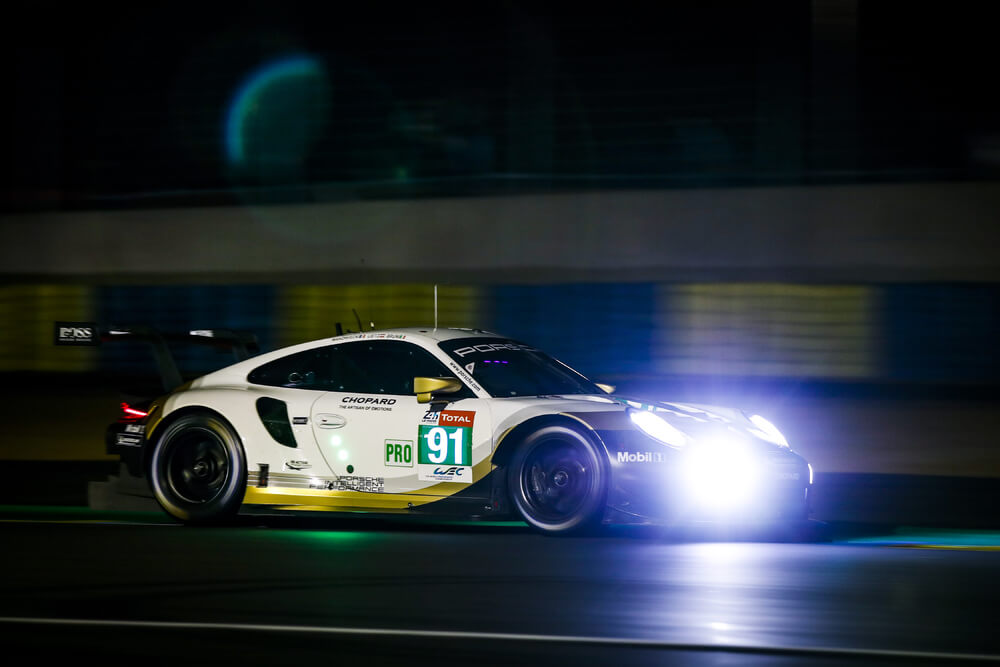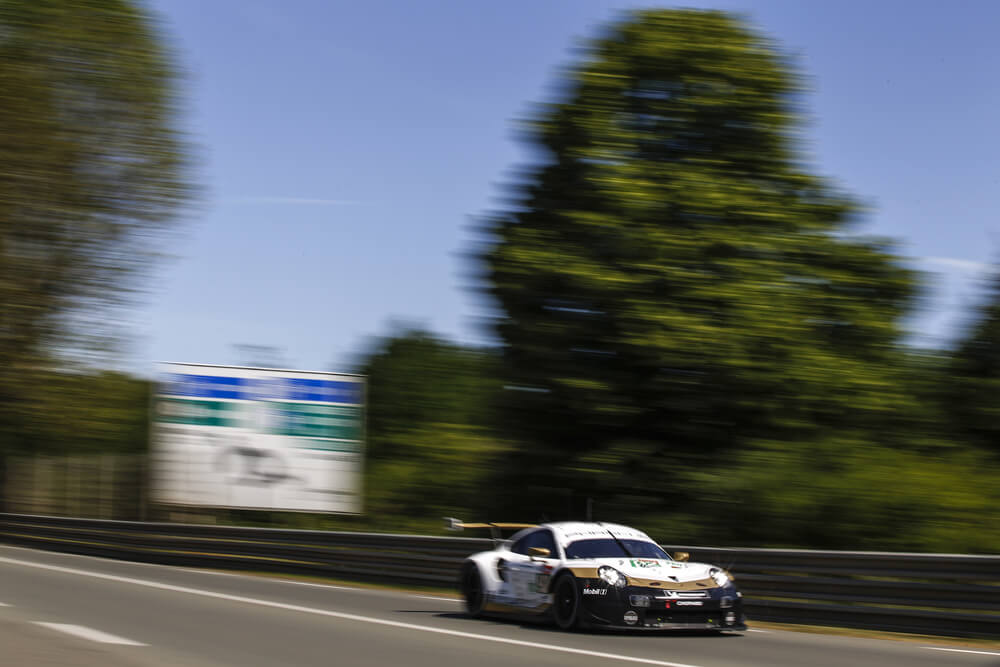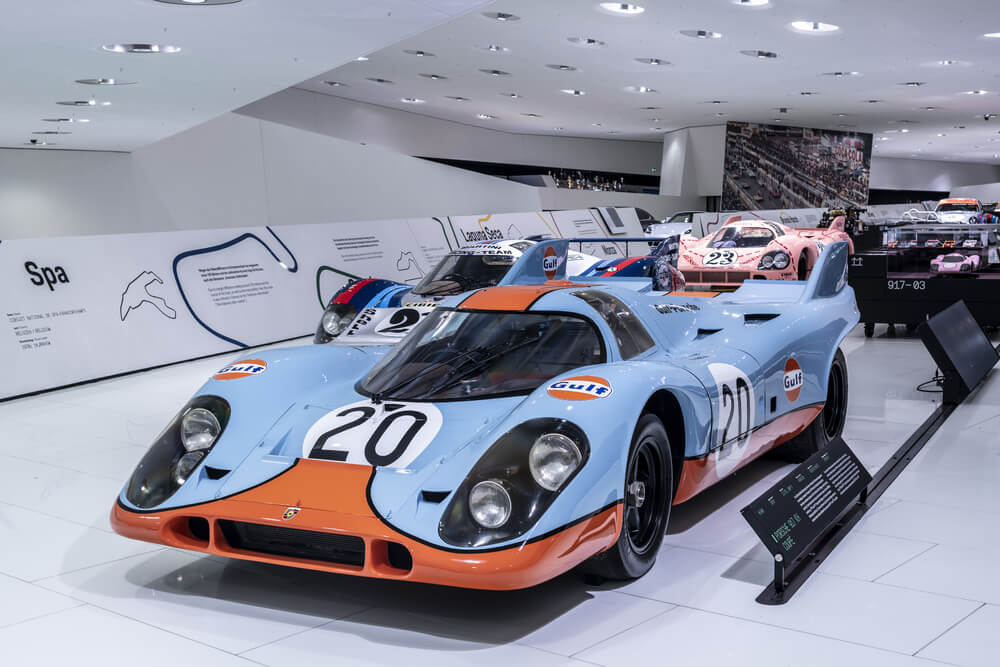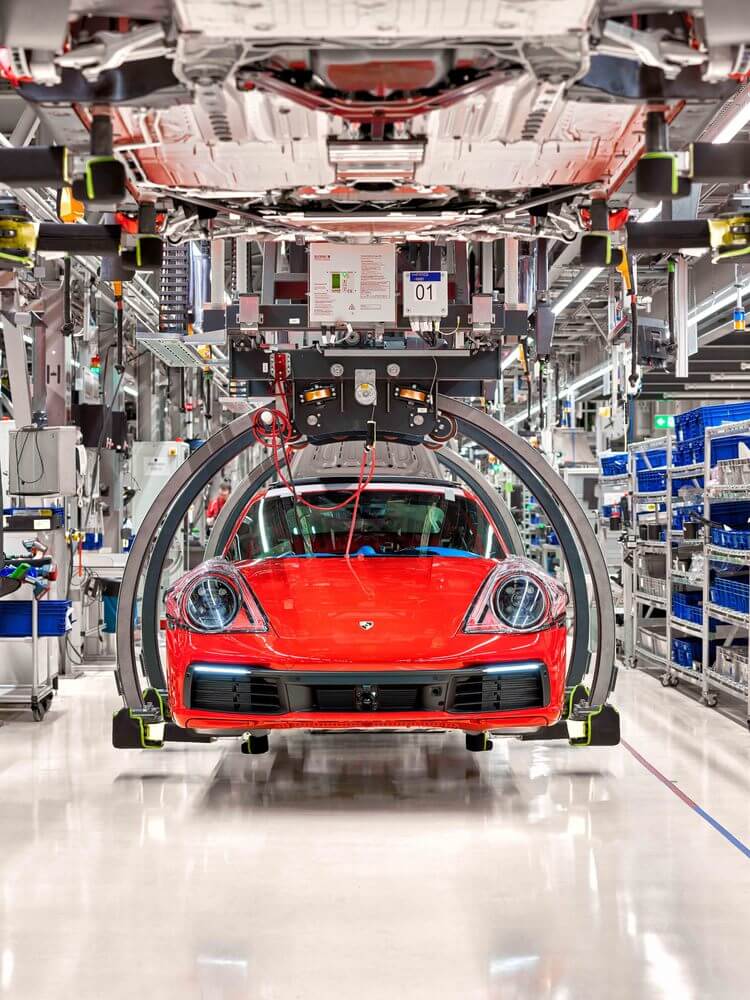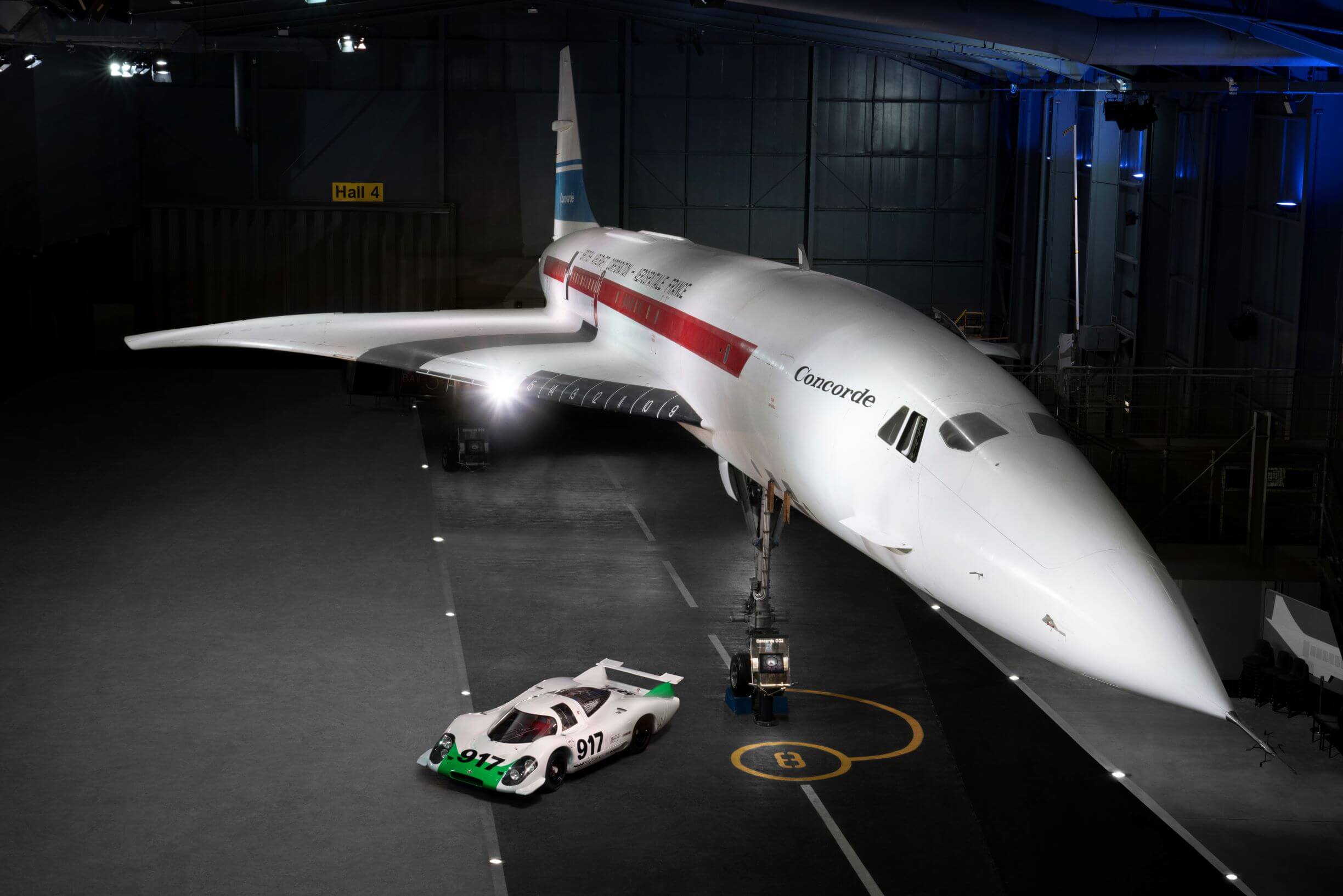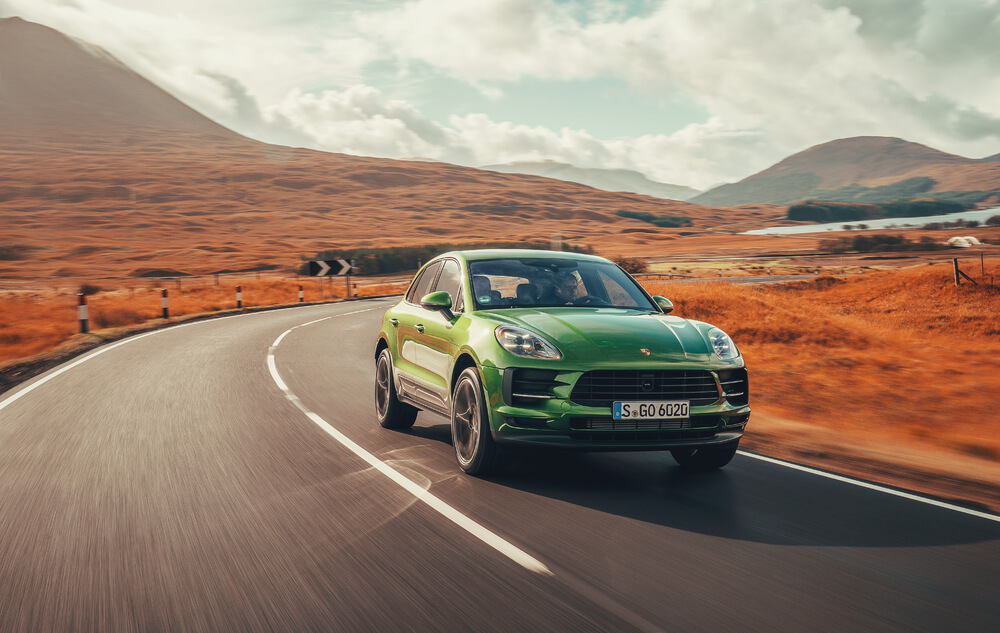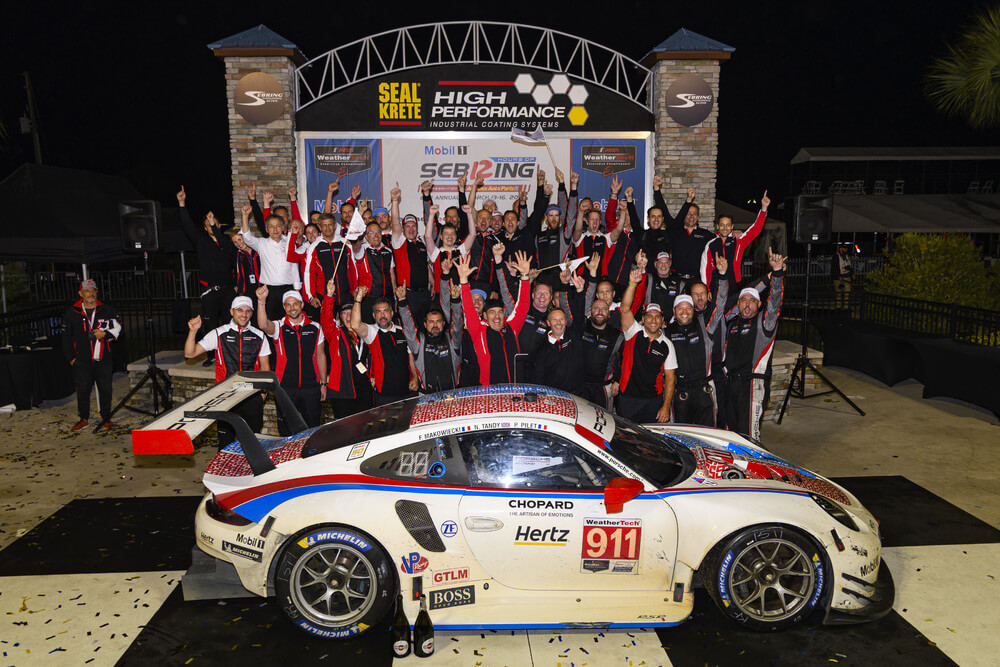The 24 Hours of Le Mans on 15/16 June marks the final round of the 2018/2019 Super Season of the FIA World Endurance Championship. After the Porsche GT Team clinched the manufacturers’ title in the FIA WEC at the previous six-hour race at Spa-Francorchamps (Belgium), the focus now turns to the duel between the Porsche works pilots for the drivers’ world championship title. At the 24-hour race, the championship drivers’ title will go to either Kévin Estre (France) and Michael Christensen (Denmark) in the No. 92 car, or Gianmaria Bruni (Italy) and the Austrian Richard Lietz (No. 91). As last year’s Le Mans winners, Porsche will campaign four works vehicles in the GTE-Pro class, like in 2018. Three customer squads field another six ca. 510 hp sports cars from Weissach at the Le Mans classic. Thus, a total of ten Porsche 911 RSR racers will tackle the race on the legendary Circuit des 24 Heures in the French Departement Sarthe.
The race
The 24 Hours of Le Mans is considered the most venerable long-distance event in the world. The first running of the race was in 1923 to showcase automotive innovation, durability and performance. The only years the classic was not contested in the city in north-western France was in 1936 (general strike in France) and between 1940 and 1948 (WWII and reconstruction). This year marks the 87th running of the Le Mans 24-hour race. On the afternoon of 15 June, 62 vehicles will head off into the race in four classes – the represents a record starting field on the 13.626-kilometre racetrack. The course is a combination of permanent racetrack (Circuit Bugatti) and public roads that are closed to traffic during the event. The famous Mulsanne straight – also known as Hunaudières – usually serves as the main route between Le Mans and Tours. The fast Porsche curves are famous and notorious. High speeds and narrow run-off zones guarantee extra thrills and spectacular racing.
The Porsche GT Team drivers
The 2018 winners, Michael Christensen (Denmark), Kévin Estre (France) and Laurens Vanthoor (Belgium), join forces again in the No. 92 Porsche 911 RSR. The No. 91 sister car is driven by Gianmaria Bruni (Italy) and Richard Lietz (Austria) as well as Frédéric Makowiecki (France), who supported them at last year’s Le Mans endurance race. The two 911 from the IMSA WeatherTech SportsCar Championship will be decked out in the livery of the highly successful North American team, Brumos Racing. Sharing the cockpit of the No. 93 car are Earl Bamber (New Zealand), Nick Tandy (Great Britain) and Patrick Pilet (France). The youngest Porsche crew, Sven Müller (Germany) and the two Porsche Young Professionals Mathieu Jaminet (France) and Dennis Olsen (Norway), share the No. 94 cockpit. The Porsche GT Team from the U.S. endurance series recently won the three races at Sebring, Long Beach and Mid-Ohio.
Customer teams
With support from the American actor Patrick Dempsey, the Porsche customer team Proton Racing faces its largest undertaking by now at the Le Mans 24-hour race. The squad from the Swabian town of Ummendorf fields four Porsche 911 RSR. Sharing the wheel of the No. 77 car is team owner Christian Ried (Germany), Porsche Young Professional Matt Campbell (Australia) and Porsche Junior Julien Andlauer from France. In the No. 88 sister car, Porsche Young Professional Matteo Cairoli (Italy) joins forces with Satoshi Hoshino from Japan and the Italian Giorgio Roda. Porsche works driver Patrick Long (USA) shares the No. 99 cockpit with his compatriot Tracy Krohn and Niclas Jönsson (Sweden). Representing Proton Competition, the Italian father-son duo Louis and Philippe Prette as well Vincent Abril (France) compete in the No. 78 Porsche 911 RSR.
The Project 1 team fights for the title in the GTE-Am class with works driver Jörg Bergmeister (Germany) as well as Patrick Lindsey (USA) and Egidio Perfetti (Norway). In their maiden season in the FIA WEC, the customer squad from Lohne in Germany heads to the final round at Le Mans leading the team and drivers’ classifications. Project 1 lines up on the grid with the No. 56 Porsche 911 RSR painted as an Art Car. The American pop art artist Richard Phillips created the distinctive design that was unveiled at the Le Mans pre-tests on 2 June. Porsche Young Professional Thomas Preining (Austria) shares driving duties in Gulf Racing’s vehicle (No. 86) with the two British drivers Benjamin Barker and Michael Wainwright.
Porsche’s successes at the 24 Hours of Le Mans
Porsche is by far the most successful marque in the almost 100-year history of the long-distance race in France. The sports car manufacturer has notched up 19 overall victories and 107 class wins. Porsche drivers have set many records on the storied racetrack. Hans Herrmann (Germany) and Richard Attwood (Great Britain) achieved the first overall victory for Porsche at Le Mans at the wheel of a 917K. A year later, Helmut Marko (Austria) and Gijs van Lennep (Netherlands) set a distance record (5.335.31 kilometres) in an identical car that remained unbroken for 39 years. Prior to this, Britain’s Jackie Oliver posted a lap time of 3:13.600 minutes in the Porsche 917LH – an achievement that has yet to be matched in an official session. In 2018, Gianmaria Bruni set a new record for GT cars at Le Mans with a qualifying lap time of 3:47.504 minutes.
The Porsche 911 RSR
The latest Porsche 911 RSR celebrated its debut in the WEC Sports Car World Championship at Silverstone in 2017. In the current 2018/2019 Super Season, the racer from Weissach has clinched first and second in the GTE-Pro class at Le Mans as well as the GTE-Am category class win. The water-cooled four-litre boxer engine is based on the seventh generation of the iconic 911 sports car and produces around 510 hp depending on the restrictor. The works vehicles tackle the 2019 Le Man race decked out in special liveries. The two Porsche 911 RSR from the FIA WEC bear the world champion logo on the roof, with gold stripes to symbolise the title victory. The sister cars from North America will race in the same Brumos finish that was used at the first two races of the IMSA WeatherTech SportsCar Championship season on the storied Daytona and Sebring racetracks.
The schedule
The 24 Hours of Le Mans takes off on Saturday, June 15, 2019, at 3pm local time. Just one free practice is held on the previous Wednesday, June 12, at 4pm. The three qualifying sessions take place on Wednesday, June 12, at 10pm as well as Thursday (13 June) at 7pm and 10pm. Another highlight of the event is the drivers’ parade in the Le Mans city centre on June 14 from 5pm.
The race on TV and in the Internet
The sports channel Eurosport broadcasts the free practice, qualifying sessions and the entire race live on its Eurosport 1 channel and as a live stream in Eurosport Player. The pay-TV streaming service Motorsport.TV also offers live footage of all sessions for a fee, as does the FIA WEC app. The German free-to-air station SPORT1 televises extensive highlights on Monday, June 17, from 8.30pm as well as in the Porsche GT Magazine on Wednesday, June 19, from 11pm. The pay-TV channel SPORT1+ will show a roundup of the race action on Monday, June 17, from 7.15pm.
Comments before the race
Fritz Enzinger (Vice President Motorsport): “We’ve already claimed the manufacturers’ title, and now one of our WEC driver teams will bring home the drivers’ championship. The situation in the lead-up to the season finale couldn’t be better. Still, we have big goals. We want to win the 24 Hours of Le Mans again. In the current era of the sports car world championship, no manufacturer has managed to win the GTE-Pro class at the French classic twice in a row. Porsche should be the first to do this. Perhaps the Porsche legend Hurley Haywood, who takes the honorary role of Grand Marshal this year, will bring us an extra portion of luck.”
Pascal Zurlinden (Director GT Factory Motorsport): “We‘ve experienced unprecedented success this season. And our American Porsche GT Team is at an all-time high after three straight wins. All of the drivers, both teams and everyone involved are heading to the biggest race of the year feeling confident and motivated. When facing such a challenge, it doesn’t get much better than this.”
Gianmaria Bruni (Porsche 911 RSR #91): “Last year Porsche celebrated a double victory. This dream will be difficult to repeat at Le Mans. We, in the number 91 Porsche 911 RSR, only have theoretical chances to claim the drivers’ title. Still, we’ll do our utmost, but at the same time we don’t want jeopardise the success of the entire team. We want to enjoy the race and ultimately see where we end up in the drivers’ world championship. One thing is certain: the title will go to Porsche drivers. That’s what counts.”
Richard Lietz (Porsche 911 RSR #91): “The Super Season went brilliantly for Porsche – completely independent of the results at the Le Mans finale. The manufacturers’ title is safe; two Porsche crews will now battle for the drivers’ world championship. Does this mean we have no goals left? On the contrary: The 24 Hours of Le Mans is so incredibly prestigious that you just want to win.”
Frédéric Makowiecki (Porsche 911 RSR #91): “Le Mans is the highlight of every race season. Every driver thinks this, but even more so for me as a Frenchman. Porsche arrives as the world champions, so we have less pressure than usual. Ever since I started racing, I’ve been trying to finally win the Le Mans 24 Hours. I think the conditions are particularly good this year, because everyone is in a great mood and relatively relaxed. This often has a positive effect on the race.”
Kévin Estre (Porsche 911 RSR #92): “I’m feeling a bit torn. On the one hand, Michael and I want to win the drivers’ title. To do this we have to score decent points, but we don’t have to risk everything. On the other hand, Le Mans is a race you definitely want to win. We experienced how wonderful it is to climb to the top of the podium at Le Mans in 2018. You can never get enough of it. So, do we adopt a strategic approach to win the title or do we risk it and go for victory? We’re not yet ready to commit ourselves in this regard.”
Michael Christensen (Porsche 911 RSR #92): “I’m super excited. It’s a very special feeling to return as last year’s winner to this venue. If you’ve conquered this huge challenge and climbed to the top podium step, you want to experience it over and over again. Aside from this, it would also yield us the drivers’ world champion title. That would fulfil another dream.”
Laurens Vanthoor (Porsche 911 RSR #92): “Porsche is making a huge effort, with four works cars contesting Le Mans. The preparation is massive, and the commitment is very intensive in every respect. Such dedication deserves success. Last year, Le Mans was kind to us. I hope it’ll be similar this year. Aside from that, I’d like to help my colleagues in the number 92 car win the drivers’ world championship crown.”
Earl Bamber (Porsche 911 RSR #93): “Le Mans is the biggest race for us. For the past few weeks, Porsche has been on a real high, not least thanks to our victories in the USA. Now, we’re travelling to Le Mans with four cars decked out in awesome designs. Even at the pre-test, the fans were delighted.”
Patrick Pilet (Porsche 911 RSR #93): “I’ve raced at Le Mans a lot and I’m very familiar with the quirks of the track and the entire event. This year I again expect the competition in the GTE-Pro class to be really tough with 17 cars from six different manufacturers. Porsche won Le Mans in 2018, so we know how it goes. We want to repeat this achievement.”
Nick Tandy (Porsche 911 RSR #93): “For us drivers, it doesn’t matter if you’ve contested Le Mans once or many times: the race is always something special. With our Porsche 911 RSR from the IMSA Series we’re actually guest starters, because we can’t earn points in the FIA WEC. That’s why we’re regarding it as a one-off event, which we definitely want to win following on the heels of our successes this year in North America.”
Sven Müller (Porsche 911 RSR #94): “A year of waiting is finally over. We’re now tackling the greatest automobile race in the world – the absolute highlight of every season. I think it’s great that we get the chance to compete as one of the youngest driver line-ups. We’re the youngsters of the works team in the number 94 car. But age is just a number. We all have racing experience and stand a good chance. The works squad from the USA managed to adjust quickly to the special characteristics at Le Mans last year. We’re ready.”
Mathieu Jaminet (Porsche 911 RSR #94): “As a Frenchman it was always my big goal to contest the 24 Hours of Le Mans. Now I’m finally fulfilling this dream. We’re certainly the underdogs of the Porsche GT Teams because we have the least experience. Still, our expectations are high. We’ll have a great car. If we concentrate and work flawlessly and consistently, anything is possible. I simply want to enjoy the whole thing.”
Dennis Olsen (Porsche 911 RSR #94): “I’m coming to Le Mans as a rookie, and I’m one of very few Norwegians to have ever driven there. What’s more, this is the first time I drive the Porsche 911 RSR for the works team. It’s something very special for me to start at this classic race. I’ve prepared for Le Mans in a simulator. In this way, I not only familiarised myself with the extraordinary racetrack, but also learned a lot about driving efficiently and looking after the tyres. That was exciting and very helpful.”
Jörg Bergmeister (Porsche 911 RSR #56): “You can’t plan for success at Le Mans. It’s always a huge achievement just to get the car across the line after 24 hours. Our focus is to finish the race with the stunning Art Car. If we succeed and maintain a decent position then our chances of winning the championship look good. That’s exactly what we want to do.”
Matt Campbell (Porsche 911 RSR #77): “We won the GTE-Am class at Le Mans last year. That was a huge triumph that we’re keen to repeat. But many, many factors play a role over the 24 hours; and you can’t influence some of them. We’ll have a fast car and we’ll try to get the most out of what’s possible again this year.”
Louis Prette (Porsche 911 RSR #78): “We three drivers in the number 78 car are all Le Mans rookies. We will enjoy our first race at this historic venue. At the pre-test, we familiarised ourselves with the Porsche 911 RSR. The car is a force to be reckoned with. Because we lack experience, our expectations for the race are not too high. Still, Le Mans is always good for a surprise. If we make it to the finish unscathed, perhaps we’ll manage one.”
Thomas Preining (Porsche 911 RSR #86): “I can hardly wait to start the 24 Hours of Le Mans. The excitement has increased significantly after my laps at the pre-test. The track is unique and offers everything a driver loves. Tackling the fast passages – particularly the legendary Porsche curves – in our well-balanced car is huge fun. I’m expecting our chances to be good in the race.”
Matteo Cairoli (Porsche 911 RSR #88): “This will be my third start at the Le Mans 24 Hours. There’s simply no other race in the world that is comparable. My racing calendar this year is extremely full; I’m constantly on the go for my job. But if there is one event you don’t want to miss out on, then it’s the Le Mans classic. I can’t imagine anything more wonderful than going full-tilt on this very special track for 24 hours.”
Patrick Long (Porsche 911 RSR #99): “This is my 16th time in a row at Le Mans. No other North American has managed this, and that makes me very proud. Personally, I have a special relationship to Le Mans, because in 1999, early in my racing career, I lived there and learned a great deal about motor racing. This year I share a car with Tracy Krohn and Niclas Jönsson for the first time. I’ve already contested a number of races against these guys. Now we’re finally a team. That’ll be very interesting.”
The Sports Car World Endurance Championship WEC
In the Sports Car World Endurance Championship (WEC), which was first contested in 2012, sports prototypes and GT vehicles compete in four classes: LMP1, LMP2, GTE-Pro and GTE-Am. They all compete together in one race but are classified separately. The Porsche GT Team contests the GTE-Pro class, while the customer teams Dempsey Proton Racing, Project 1 and Gulf Racing fight for honours in the GTE-Am class.
Further information, film and photo material in the Porsche Newsroom: newsroom.porsche.de. The Twitter channel @PorscheRaces provides live updates from Porsche Motorsport with the latest information and photos from racetracks around the world.

